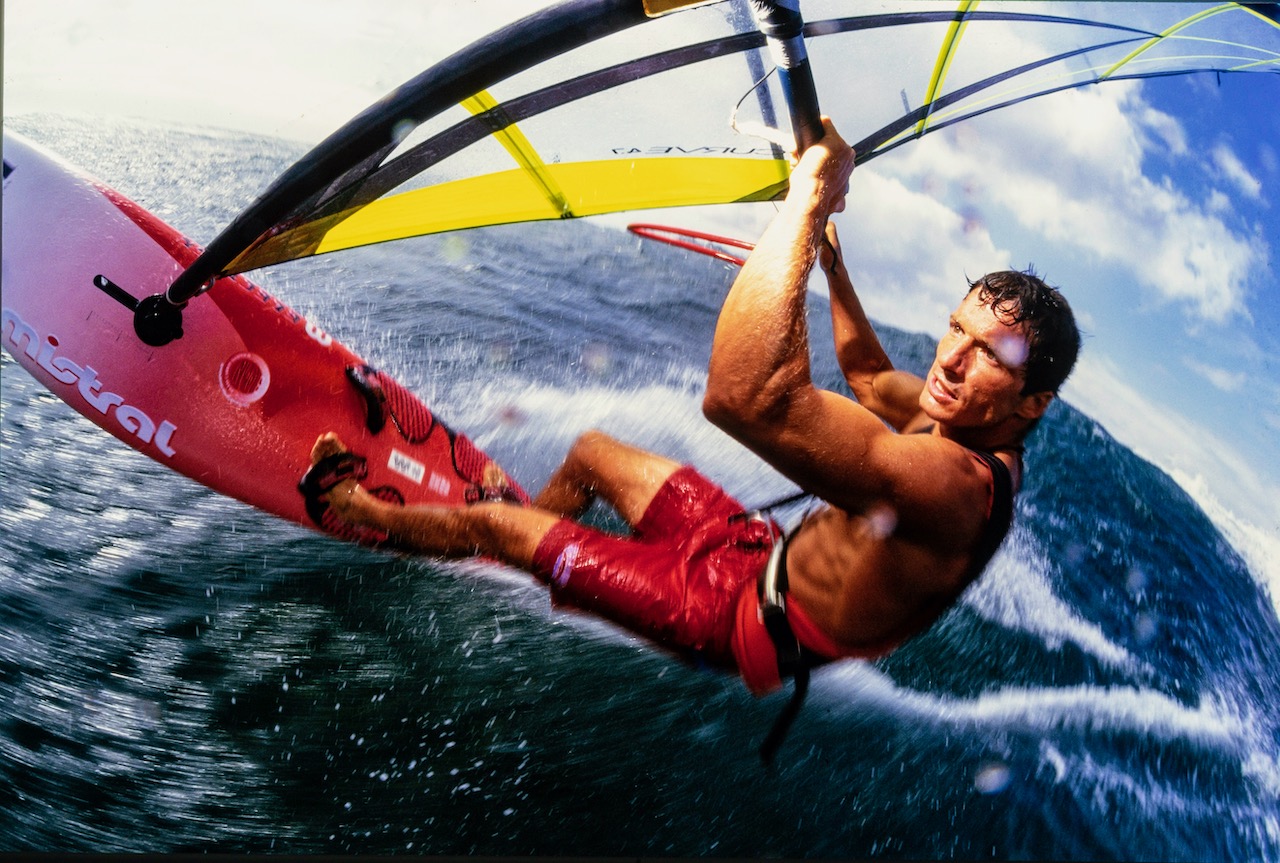A Brief Overview of Windsurfing
15. Mai 2024Is Windsurfing not Cool Anymore?
Windsurfing has always been cool, and many thousands continue to windsurf and learn.
You could say windsurfing is cooler for being just that bit harder to learn than kitesurfing, but the rewards are plenty.
For more than 25 years, it was ‘the’ sport' until kitesurfing was created by the same people who made windsurfing equipment.
Windsurfing covers a much wider range of wind strengths, is less restrictive, and is truly a hugely diverse sport with an epic history, of which Mistral was a part.
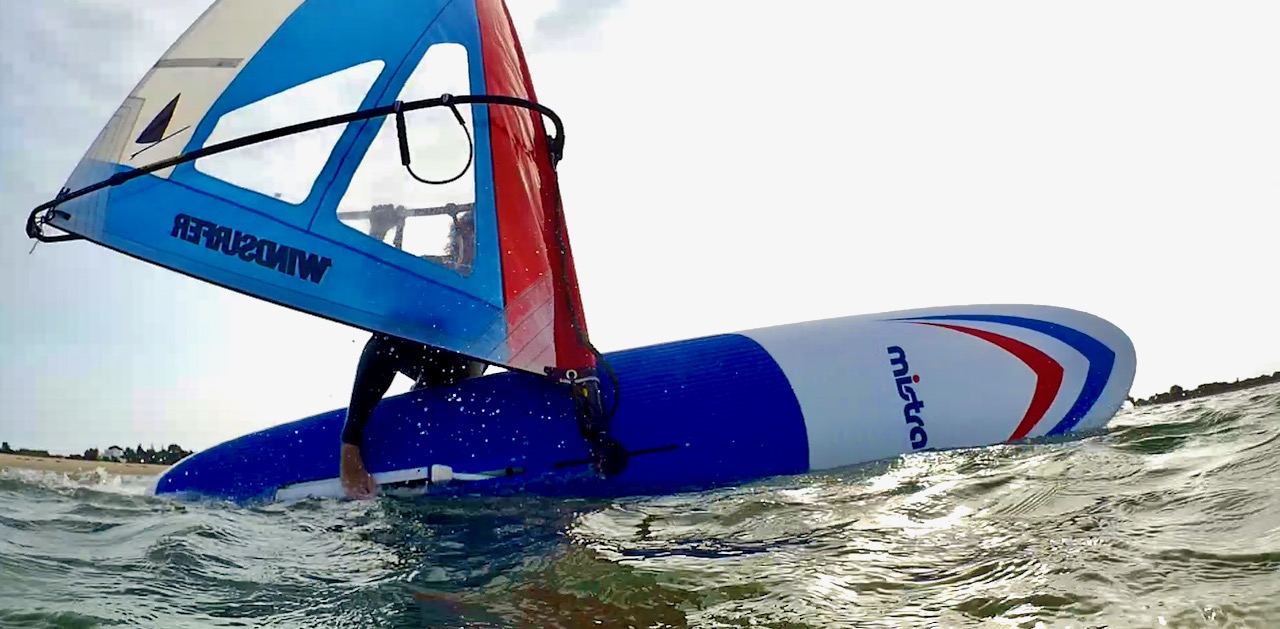
When was Mistral Founded?
It was as early as 1974, but formally, it was not until 1976.
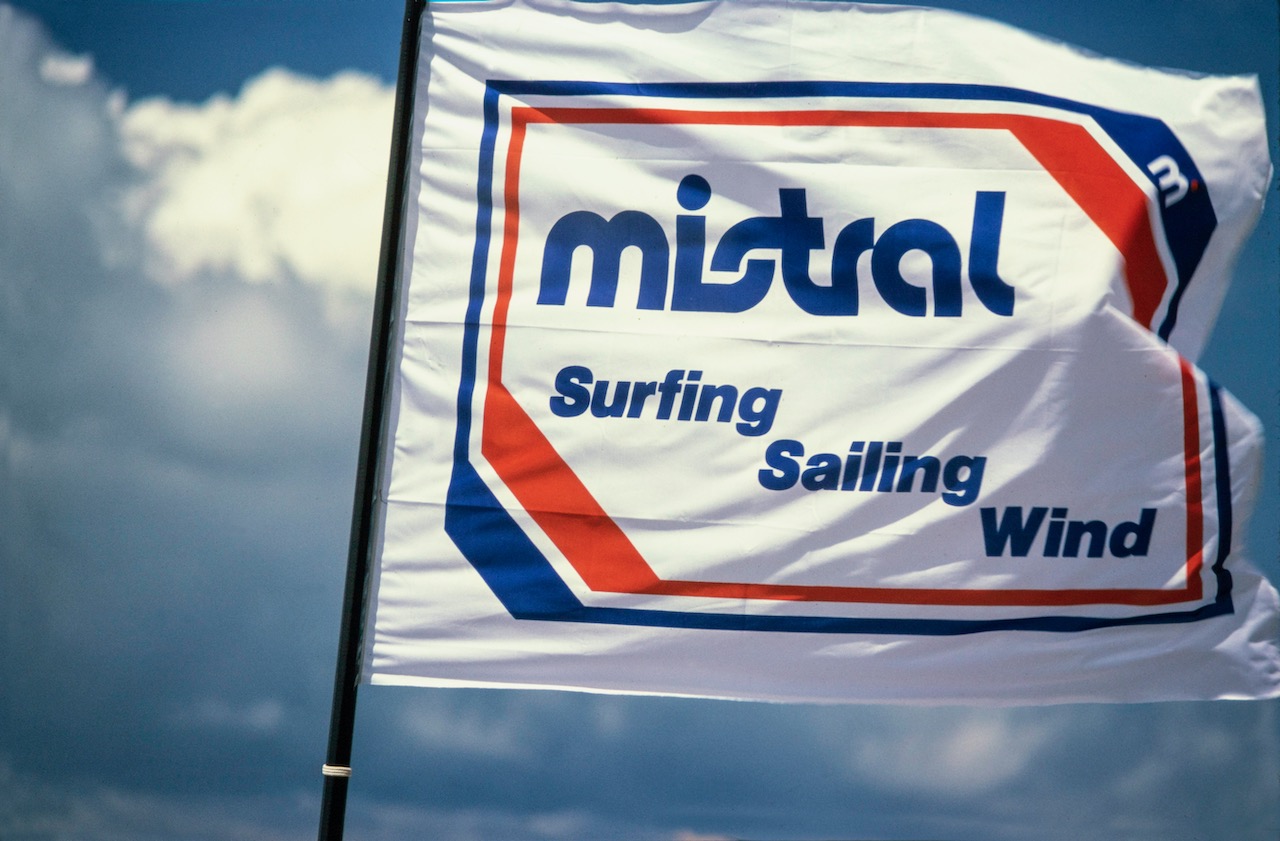
Why did Mistral Cease Windsurfing as their Core Business?
This complex issue involves the rise of kitesurfing, economic downturns in third-party windsurfing businesses in general, and some degree of industry politics.
Our windsurfing was licensed for a short time, but this, too, became problematic. However, it is what Mistral is known for and made famous for.
Today, we are returning to the roots of windsurfing with new, radical designs and concepts soon to be revealed.
Why is Windsurfing not as Popular as Kitesurfing?
Kitesurfing is a great sport; however, windsurfing has been talked down for many years for its complexity, difficulty to learn, and the greater amount and size of equipment.
However, this is grossly unfair for a sport that offers far greater opportunities and variance than kitesurfing.
In fact, it is unreasonable to compare and trade one off against the other as they are uniquely different.
Windsurfing could be considered a more extreme sport in terms of the range of wind and water conditions in which it can be practised.
Is Windsurfing for the Older Generation?
Windsurfing is for everyone. Indeed, it is better suited to a much wider age range than kitesurfing.
It’s less threatening, more versatile, and requires much less space to practice.
Today, there is a growing interest in the sport amongst younger participants.
Can it be a Family Sport?
Because of its wide age appeal and fewer limits regarding risks associated with kitesurfing, windsurfing remains an ideal family-orientated sport.
Why is Kitesurfing so Popular?
This is largely because when it was introduced, it was easier to learn than windsurfing and, in fact, less physical.
However, this is not to say that the rewards of learning to windsurf outweigh the benefits—they do.
Windsurfing today is very much easier than it was when kitesurfing became popular.
Today, you could argue windsurfing is, in fact, easier and faster to learn than kitesurfing, especially for children.
One of the drivers of kitesurfing is that it is a relatively equipment-sparse sport and easy to travel with.
Is Windsurfing Dangerous?
All water sports are inherently dangerous, but only to the degree to which the user fails to act with due diligence.
Do not let anyone tell you kitesurfing is ‘safer,’ as this is simply not the case and is more marketing hype than reality.
Is Windsurfing Difficult to Learn?
When windsurfing was first launched in contemporary form in 1968, the equipment was heavy and low-tech.
The same remained true even into the 1970s, yet the sport was so addictive that nothing was an obstacle to entry.
Today, the equipment is so much lighter and advanced.
Our new Go Surf boards are ideal entry-level boards.
What Makes Learning Windsurfing Difficult?
The wrong equipment will slow the learning process.
However, if you learn with the correct kit, the correct environment, and some guidance, learning is a breeze, loads of fun, and less tiring.
Is Windsurfing Good Exercise?
Yes, and indeed, more so than kitesurfing.
Like SUP, it requires core muscle engagement and balance, ensuring a good workout.
In this regard, windsurfing is superior to kitesurfing in that it offers a means of strengthening the body and improving balance.

What Equipment is Needed?
The basic equipment comprises board, sail, mast, boom, and mast foot.
Together, they are called ‘The Rig’.
These components must match up together in the suitability of size and performance.
Below: 2-part mast, boom, mast extension, mast foot and rigged with a sail.
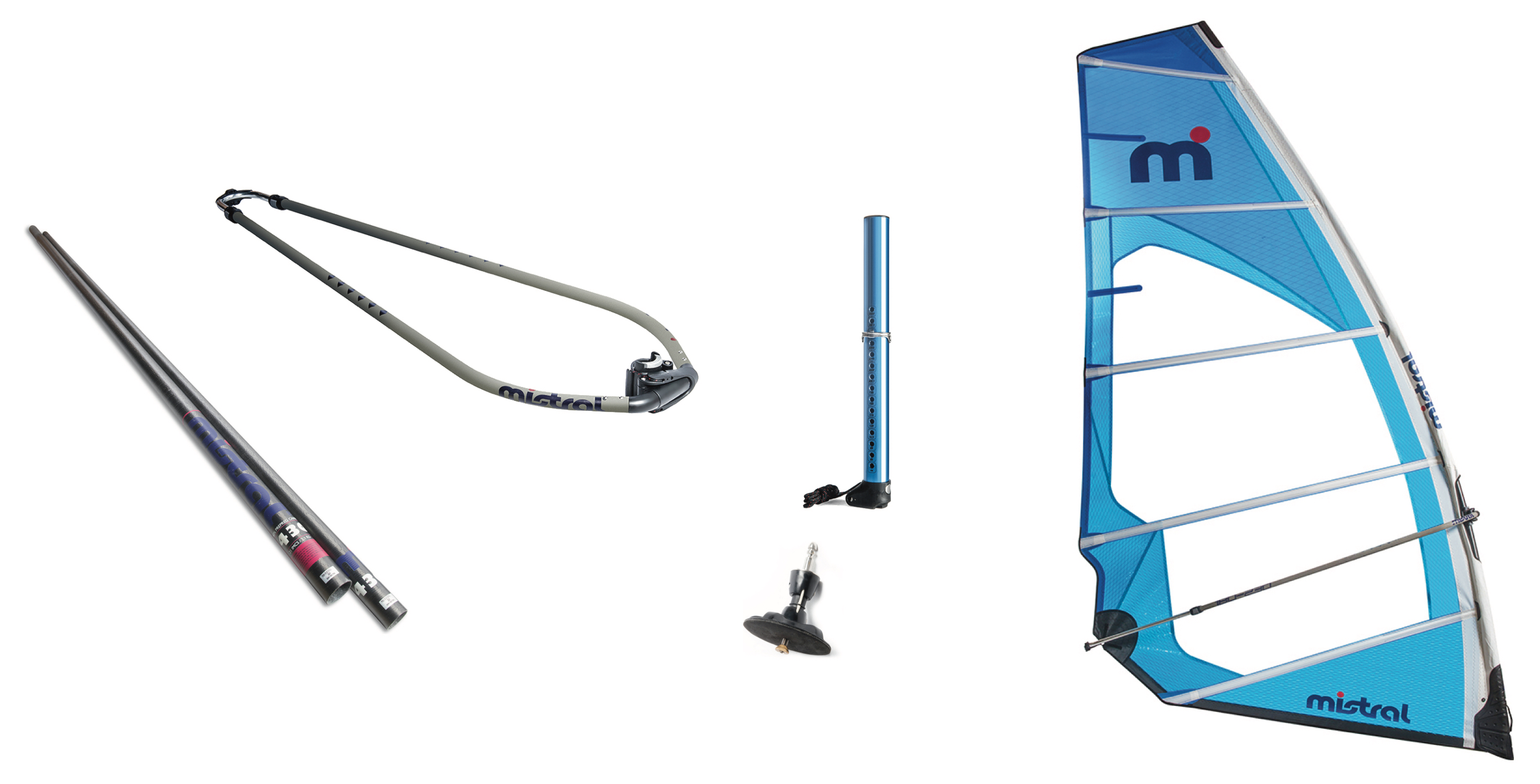
How Must the Rig Components Be Compatible?
The mast length needs to fit the length of the sail’s mast sleeve.
The boom must fit the overall width of the sail when pulled tight from the mast sleeve to the end of the sail’s outer extreme.
The outer edge of the sail has an ‘eye’ called the ‘clew’ into which the outhaul rope of the boom is passed through.
Do I Buy the Components Separately?
Your first-time buy is best made as a ‘complete’ purchase with all components.
Otherwise, you will have to carefully consider seeking out all the components to make sure they are compatible.
Should I Seek Professional Tuition?
For most, the answer is ‘yes’ because you will learn faster and, importantly, learn safety and risk management issues.
What are the Characteristics of Learner Boards?
These are often super wide for added stability; however, once you understand and master the basics, we advise a narrower board for added speed and enjoyment.
Lightweight sails, masts, and booms make managing and learning the basics easy.
What Sail Size Would I Need to Learn?
Learning is best achieved using a sail of 5m and under and for children as small as 3m.
Less sail means less power. However, you need some wind to learn.
No wind will make learning and understanding how everything works frustrating and difficult.
Our learner rigs are ideal and will fit any board.
Does it Hurt if you Fall from the Board?
Not if you fall away from the board and not on to it!
How Important is it to Learn with the Correct Equipment?
Learn with the incorrect kit, and you will probably walk away disappointed.
Your first experience needs to be positive, so you must be careful regarding the equipment.
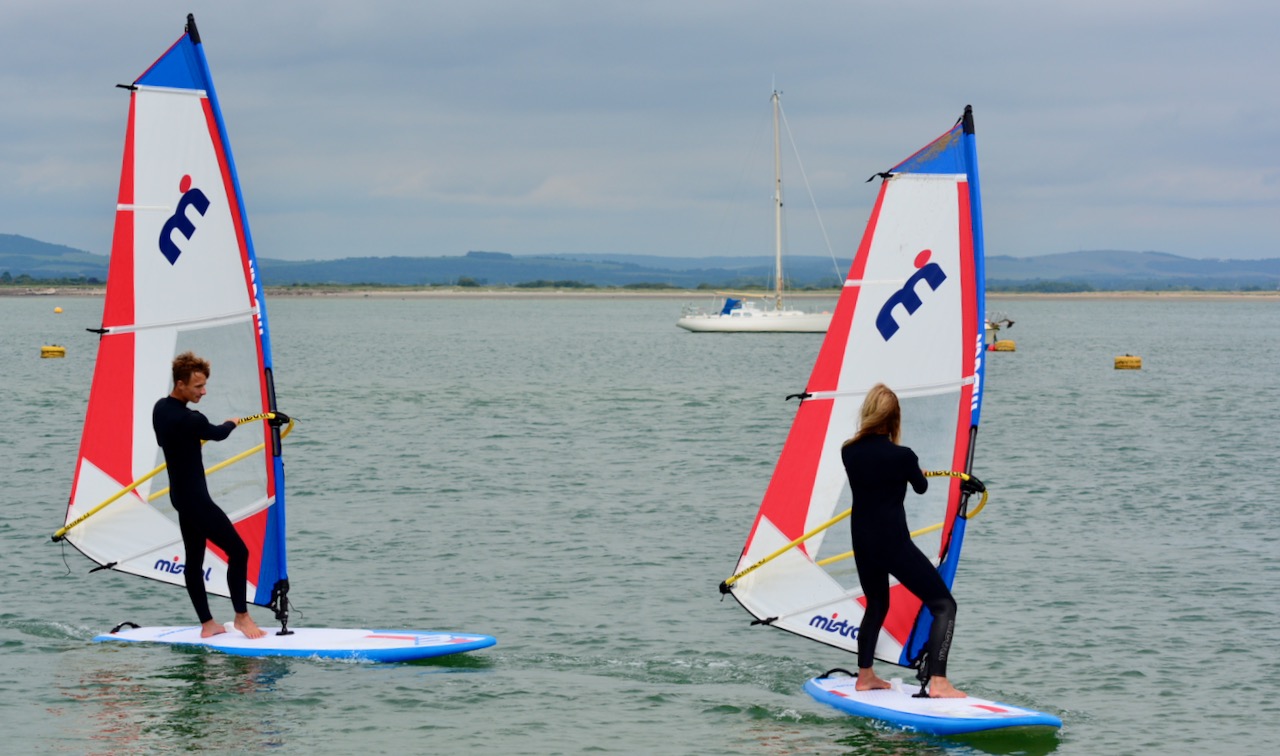
Conditions to Avoid?
- Avoid winds that are blowing ‘offshore’ (out to sea - away from the land).
- This is the most important factor to consider.
- Learn in winds of less than 15 knots (Force 3), and avoid choppy waters and strong tidal flows.
- Avoid areas that are busy with water traffic, especially powered vessels.
- Mostly, you should sail with someone who is experienced and can give you good advice.
What Clothing to Wear?
- Footwear such as sneakers or neoprene shoes is strongly advised.
- Wear performance clothing to protect from windchill, and when learning, consider the water temperature if you fall into it.
- Wear Lycra® for UV protection and neoprene for cold water protection.
- The colder the waters and winds, the more critical it becomes to invest in high-performance clothing.
- Rather than using sun creams to ‘cover up’.
- Creams will make the board and boom ‘greasy’.
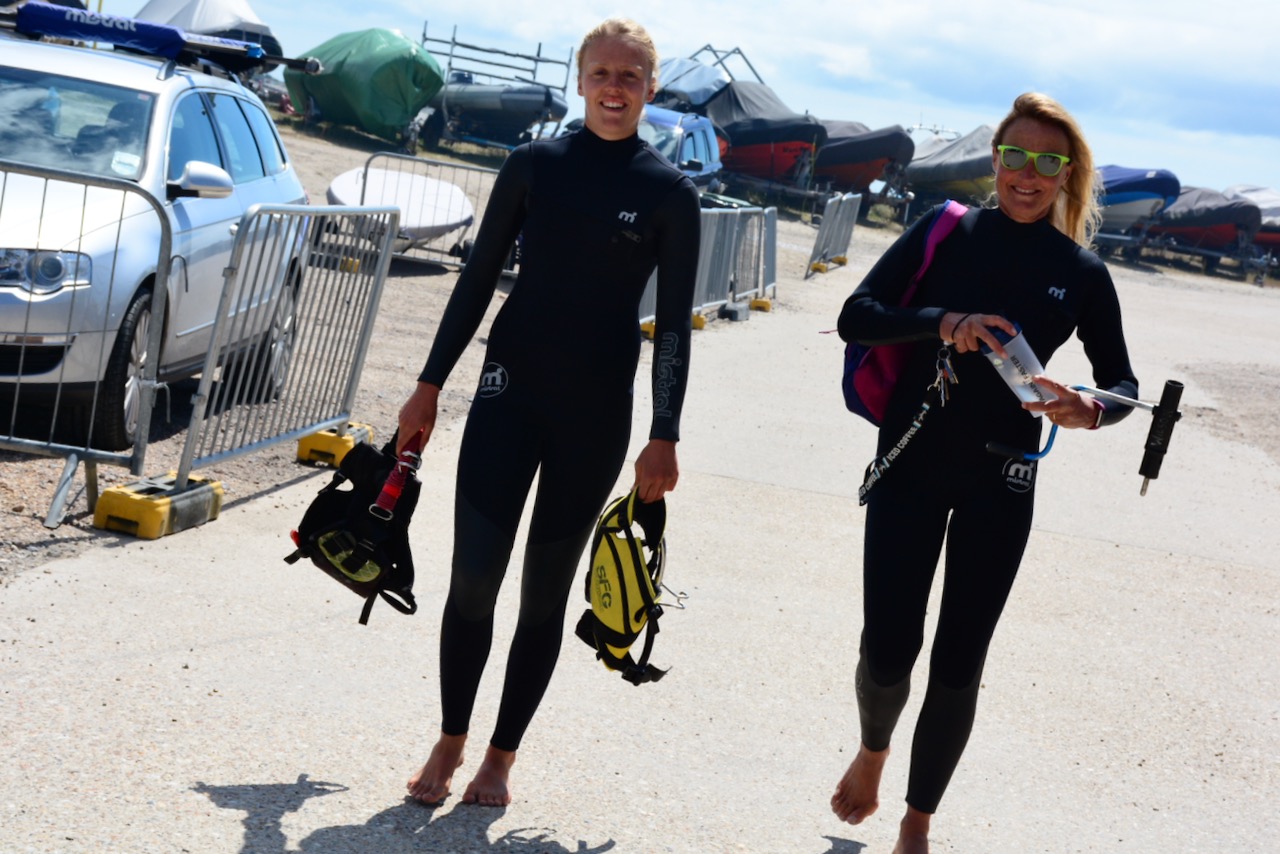
What is a Harness, and Do I Need One?
A harness permits the rider to hook into a line connected to the boom, allowing body weight to absorb the power and pull off the sail.
You will not need a harness when learning, but once you improve, you will take on stronger winds; a harness will increase your water time and control.
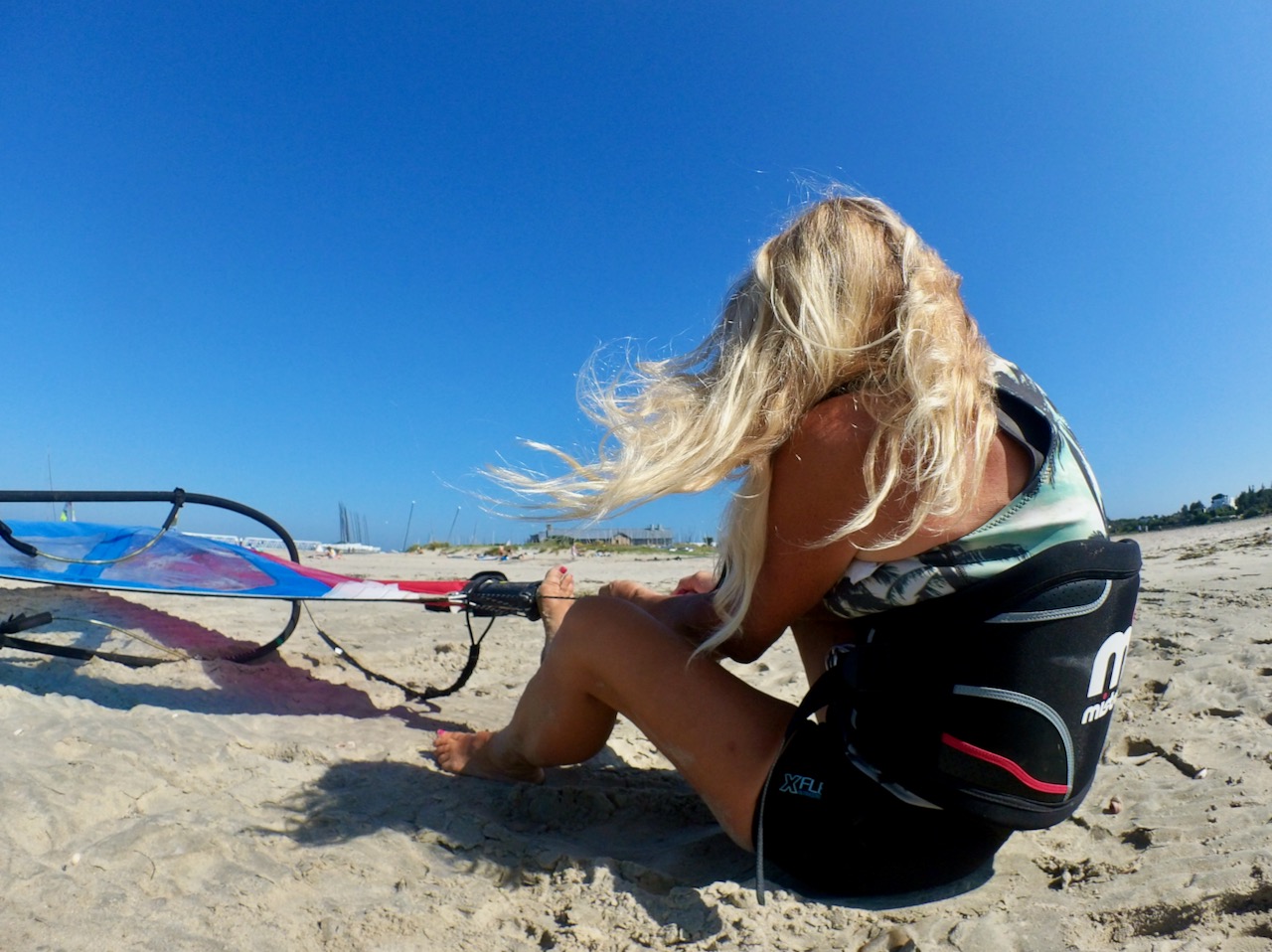
What Volume Board Do I Need?
The rule applied is 1 litre for every kilo you weigh, plus 50 - 100 additional litres.
Consider use by friends and family.
The greater the volume, the greater the range of users.
Is Windsurfing Equipment Bulky?
If canoes and kayaks presented such a hindrance to growth due to their size, then it would be hard to explain why these sports are more omnipresent and universally popular worldwide than windsurfing, surfing and kiteboarding combined! Do not let the equipment needs put you off. The rig components will fit inside an average car, and many shorter performance boards will fit it, too. For example, when demounted and packed away, our rigs are less than 1m long.
What are the Different Niche styles of Windsurfing?
Wind strength and water conditions determine equipment needs to support interests.
Light winds are ideal for learning and cruising; higher winds lead to Freeriding, which involves shorter boards, foot straps, and higher-performance equipment.
- Freeride windsurfing is all about hooking into a set of harness lines and holding on.
- Freestyle takes it up a notch, where riders perform acrobatics, including flips and somersaults, all of which have names similar to skateboarding.
- Slalom is an extreme form of Freeriding, using boards designed to travel fast under high levels of control.
- As the name implies, wave sailing is sailing within the waves and surf.
- Racing on ‘Class Boards’ has strong ties to dinghy sailing. The diversity is enormous, and there is equipment to suit all forms.
